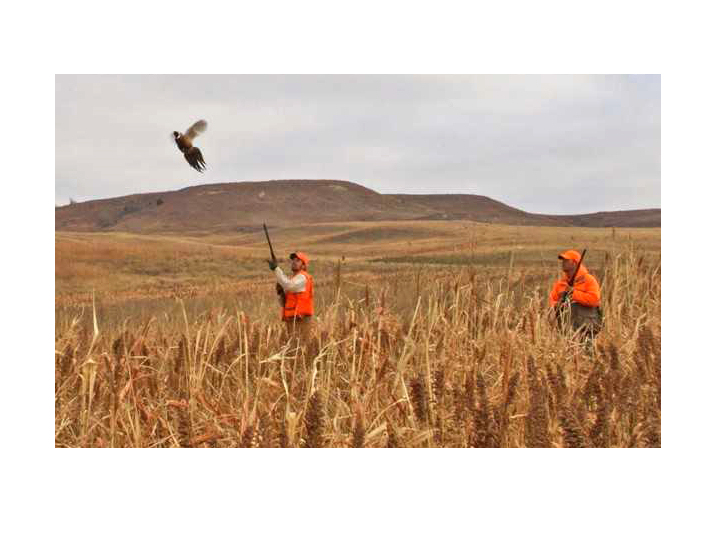Avid bird hunters will be in the field Saturday as the Kansas pheasant and quail seasons open.
According to the Kansas Department of Parks and Wildlife, opening weekend is a time-honored tradition where spending time with friends and family, renewing acquaintances with landowners, and experiencing the Kansas countryside becomes more important than the number of birds bagged.
It’s a big deal, both to hunters and to the state’s economy. According to the U.S. Fish and Wildlife Service’s Survey of Fishing, Hunting, and Wildlife-Associated Recreation, hunting pumps more than $400 million into the Kansas economy each year, and while hunters find a myriad of game species to pursue in Kansas, pheasant and quail are high on the list. Year in, year out, Kansas will rank among the top three states in the nation for harvest of pheasant and bobwhite quail.
More than 80,000 hunters will hunt pheasants in Kansas this year, and while there is some overlap, more than 62,000 will hunt quail. Approximately 40,000 of those hunters will be nonresidents. If you don’t believe it, try to reserve a motel room in any small town in western Kansas on Saturday. Conservatively, nonresident bird hunters will spend more than $150 per day on lodging, fuel, food and supplies while hunting in Kansas, adding much-needed dollars into the small communities that dot prime Kansas hunting regions.
Officials remind hunters that landowner permission is required before hunting on private land, whether the land is posted or not. Land posted with purple paint on fence posts is the same as land posted with “Hunting By Written Permission Only” signs and both types require written permission before hunting.
Pre-season reports predict good hunting in many areas of the state for both pheasants and quail.
Quail
Kansas continues to support above-average quail populations with spring densities similar to last year, including significant increases in the Smoky Hills region of north central Kansas and the Flint Hills. Since peak nesting for quail is later than pheasants, there is some concern about chick survival with late summer conditions; However, reproduction measures remained high and improved across most regions on the brood survey. Despite improved production, brood survey results estimate a decrease in statewide densities fueled mostly by large decreases in estimates in the Smoky Hills. Disagreement between these estimates and production estimates may suggest that poor survey conditions impacted counts. Still, Kansas maintains one of the premier quail populations in the country and harvest should be among the highest this year. The best opportunities will be in the Flint Hills and central regions, with plenty of quality hunting opportunity scattered in the remaining regions.
Pheasants
Above average spring rainfall created good nesting cover across most of the primary pheasant range. Some areas in far west Kansas had better nesting conditions than observed in a decade. While estimates for the summer brood survey did not show significant change, most regional estimates trended slightly down; The western extent of the High Plains generally showed improvements, with the highest regional roadside estimates being in the Northern High Plains. Measures of reproductions were greatly improved across most regions this year, and Kansas should again be among the leading states for fall harvest.



